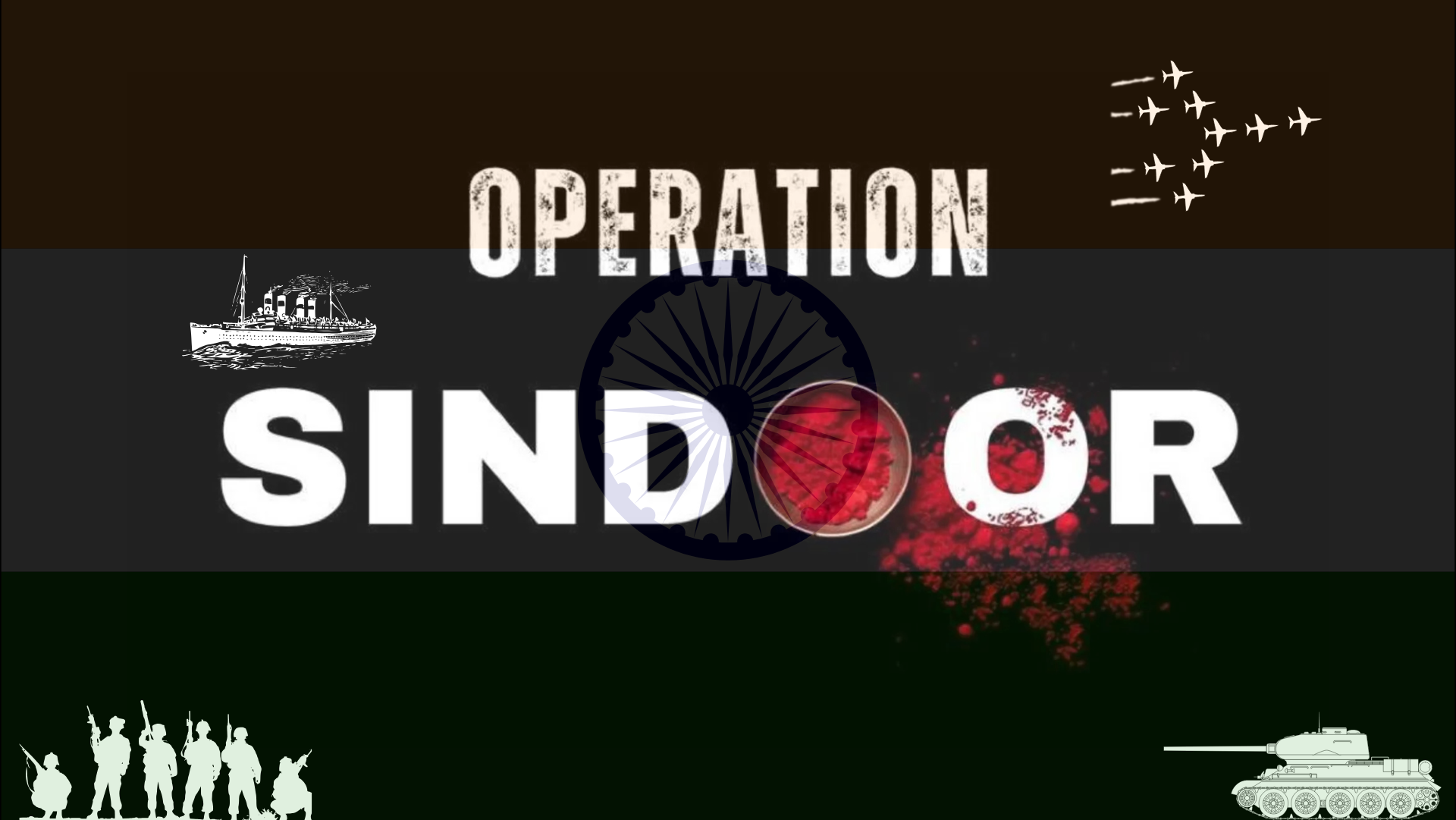On 22 April 2025, a Pakistan-based terrorist group called The Resistance Front (TRF) carried out a horrific attack on Indian tourists in Pahalgam, Jammu & Kashmir.
- 26 innocent civilians were killed, including one Nepali national.
- Attackers segregated victims based on religion and carried out killings at close range in front of families.
- The attack aimed to disrupt the region’s normalcy, especially its booming tourism industry, which had seen 23 million visitors the previous year.
- TRF, a front for the Pakistan-backed Lashkar-e-Taiba (LeT), claimed responsibility twice within hours.
This act was not only meant to create fear and terror but also instigate communal tension in the region.
India responded with restraint initially, engaging diplomatically and raising the issue at the UN Security Council and other international forums. Despite these efforts, Pakistan failed to act against the terrorist infrastructure operating from its soil, leaving India no choice but to take decisive military action.
Launch of Operation Sindoor
In response to the Pahalgam attack, the Indian government launched Operation Sindoor on the night of 7–8 May 2025.
Key Objectives:
- Target terrorist infrastructure across Pakistan and Pakistan-occupied Kashmir.
- Neutralize threats to prevent further attacks on Indian soil.
- Maintain proportionality and non-escalatory posture—avoiding unnecessary civilian or military escalation.
Nine major terrorist camps were targeted in a precise, intelligence-led strike. Importantly, no Pakistani military installations unrelated to the attack were engaged.
Pakistan’s Retaliation and India’s Response
Early on 8 May, Pakistan attempted coordinated drone and missile strikes on over a dozen Indian military installations, including:
- Srinagar, Jammu, Pathankot, Amritsar, Ludhiana, Bathinda, and Bhuj.
India’s Integrated Counter-drone Grid and layered Air Defence systems intercepted these attacks, with debris conclusively traced back to Pakistani origin.
In response, India conducted targeted strikes on Pakistani Air Defence systems that had facilitated the earlier aggression. The principle was “equal intensity in the same domain”, ensuring deterrence without broad escalation.
Along the Line of Control (LoC), Pakistan also fired mortars and heavy artillery, killing sixteen civilians, including women and children. The Indian Armed Forces responded proportionally, reaffirming their commitment to non-escalation but readiness to act if provoked.
Tri-Service Coordination: Army, Air Force, Navy, and BSF
Operation Sindoor highlighted the synergy of India’s armed forces:
Indian Air Force (IAF)
- Conducted precision airstrikes on terrorist camps in Pakistan and Pakistan-occupied Kashmir.
- Protected Indian skies against Pakistani drones and UAVs using Akash missiles, Pechora, and OSA-AK systems.
- Integrated Air Command and Control System (IACCS) enabled real-time coordination with Army and Navy.
Indian Army
- Border vigilance by BSF troops in Samba prevented major infiltrations.
- Army air defence units collaborated with the IAF, employing shoulder-fired missiles, LLAD guns, and long-range SAMs.
- Ensured protection of civilian and military infrastructure despite Pakistani provocations.
Indian Navy
- Deployed Carrier Battle Groups with MiG-29K jets and early-warning helicopters.
- Maintained maritime surveillance and control along the Makran coast.
- Prevented Pakistani forces from gaining operational maritime space.
Strategic Planning and Technology
India’s success in Operation Sindoor relied on years of investment in defence preparedness, technology, and multi-domain integration:
- Defence Communication Network (DCN): Secure voice, data, and video communication for tri-service coordination.
- Integrated Air Command and Control System (IACCS): Enabled synchronized real-time response across Army, Air Force, and Navy.
- Joint Logistics Nodes (JLNs): Efficient supply of ammunition, rations, fuel, and engineering support.
These systems ensured precision, speed, and coordination in complex, multi-domain operations.
Government Reforms Supporting Joint Operations
Several reforms enabled tri-service integration:
- Chief of Defence Staff (CDS): Provides unified leadership and advises the Defence Minister.
- Integrated Theatre Commands (ITCs): Optimizes operational readiness across land, sea, and air.
- Department of Military Affairs (DMA): Facilitates joint planning, procurement, and training.
- Inter-Services Organisations Act (2023): Streamlines command and discipline for joint operations while maintaining service identities.
- Joint Training Courses & Exercises: Prachand Prahar, Desert Hunt, and other programs prepare officers for multi-domain warfare.
Global Context and Pakistan’s Role
- TRF and similar outfits operate under Pakistan’s sheltered terrorist networks, as India has documented in UN reports.
- Pakistan has a long history of cross-border terrorism, including the 2008 Mumbai attacks, 2016 Pathankot attack, and 2019 Pulwama attack.
- Operation Sindoor was India’s principled response to terrorism emanating from Pakistan, designed to avoid broad military escalation while ensuring justice.
Impact of Operation Sindoor
- Terrorist camps dismantled and major threats neutralized.
- Cross-border attacks deterred through measured response.
- Tri-service synergy demonstrated India’s modern military capabilities.
- Civilian lives prioritized, with proportional responses to provocations.
- Sent a clear message to Pakistan: India protects its citizens and acts decisively against terrorism.
Operation Sindoor stands as a defining moment in India’s defence history:
- It combined precision strikes, intelligence-led planning, and multi-domain integration.
- Demonstrated India’s ability to respond decisively without broad escalation.
- Showed the full potential of a modern, integrated tri-service military structure.
The operation was not just retaliation—it was a statement of national resolve, strategic foresight, and joint operational excellence.
India is now better prepared to protect its citizens, deter cross-border terrorism, and maintain regional stability, proving that jointness and technological superiority are the keys to modern defence.


